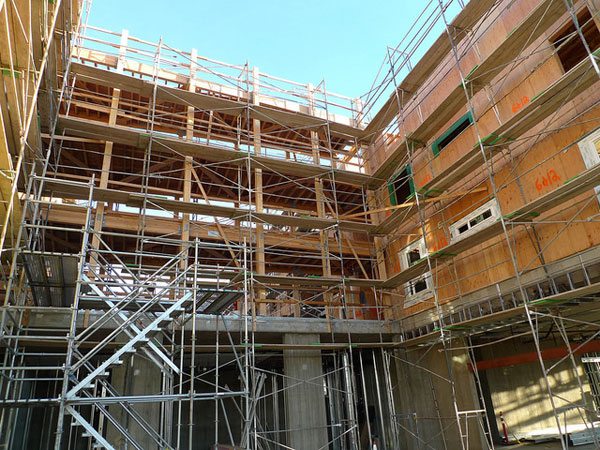
January 18, 2018, New York Times
The tax law passed by Congress last month is expected to significantly reduce affordable housing production, reports Conor Dougherty in the New York Times. Novogradac & Company, a national accounting firm based in San Francisco, indicates that the new tax law will reduce expected affordable housing production over the next decade from 1,493,000 units to 1,261,100 units, a 16-percent decline.
“It’s the greatest shock to the affordable-housing system since the Great Recession,” according to managing partner Michael Novogradac.
How this works is all a little bit complicated, but, as NPQ has covered before, for better or worse, the federal government often prefers tax credits (also known as “tax expenditures”) to directly buying the services it wants. This effectively hides the government’s hand and gives the appearance of a “market mechanism” at work even if the reality is one of public subsidy. Since 1986, Dougherty reports that at a cost of about $9 billion a year, the Low-Income Housing Tax Credit has supported the production of about 3 million units of affordable housing nationwide.
As Dougherty explains, the tax credit mechanism works like this:
State governments award credits to affordable-housing developers, who transfer them to corporations in exchange for equity in rental buildings whose units are set aside for low-income tenants. Corporations use the credits as a coupon against future taxes.
The buyers of tax credits are typically corporations, especially banks, which, by purchasing the credits, help fulfill their legal Community Reinvestment Act (CRA) obligation to invest in low-income communities. Banks still have the same CRA incentive to invest as before, but their tax rates just fell from 35 to 21 percent and the value of the credit has dropped accordingly.
Sign up for our free newsletters
Subscribe to NPQ's newsletters to have our top stories delivered directly to your inbox.
By signing up, you agree to our privacy policy and terms of use, and to receive messages from NPQ and our partners.
Novogradac & Company notes that two provisions in the tax bill will reduce affordable housing production. The most significant measure is the drop in tax rates, which is expected to cut production by 212,400 units over 10 years. But a second technical measure, known as chained CPI, will reduce the rate of increase in tax credit allocations, reducing expected production by another 19,900 units over 10 years. (For the uninitiated, a chained CPI results in a lower reported inflation rate because it assumes consumers shift what they buy when prices of favored items rise rather than calculating inflation based on the price of a fixed “market basket.”)
As NPQ noted last March, the expected decline in corporate tax rates began to impact housing tax credit values even before the tax law passed. Now that the law has passed, Kate Hartley, director of the San Francisco Mayor’s Office of Housing and Community Development, told Dougherty that she expects the cost of building affordable housing to climb about $50,000 per unit. As a result, Hartley says, the city has less money to build the units they want.
But even before the law passed, a 113-unit building in San Francisco’s Tenderloin saw the value of tax credit equity in the project fall by $3 million (about $26,500 per unit) and the City had to step in with its own funds to fill the gap.
While a 16 percent decline is less than some feared (the House tax bill would have cut more), the cuts are still poorly timed. According to a 2017 report by Harvard’s Joint Center for Housing Studies, Dougherty reports, “The number of renters has surged over the past decade, with the country adding about one million renters a year since 2010—about twice as many as the previous rental peak in the 1970s and ’80s.”
With rising demand come higher housing costs, and some states have responded. In California, the state legislature passed 15 housing bills this past fall, including a real estate transaction fee that’s expected to raise $250 million a year to support affordable housing and a $4-billion bond issue. San Francisco State Senator Scott Wiener, Dougherty notes, “has followed up with several proposed bills that would, among other things, increase construction around train stations and other transit hubs.”
At the federal level, last year Senators Maria Cantwell (D-WA) and Orrin Hatch (R-UT) introduced Senate Bill 548, which, if passed, would increase the number of low-income housing tax credits by 50 percent, but to date the bill has languished in committee.
In the meantime, housing affordability challenges loom large. As Dougherty points out, “Over the next decade the younger half of the millennial generation will move into their 20s and 30s, adding to the pool of renters.” Worse, the Harvard housing study finds that in the next decade, even as production is cut, “more than a million units of affordable housing financed by low-income housing tax credits and other government programs are set [to] expire.”—Steve Dubb













